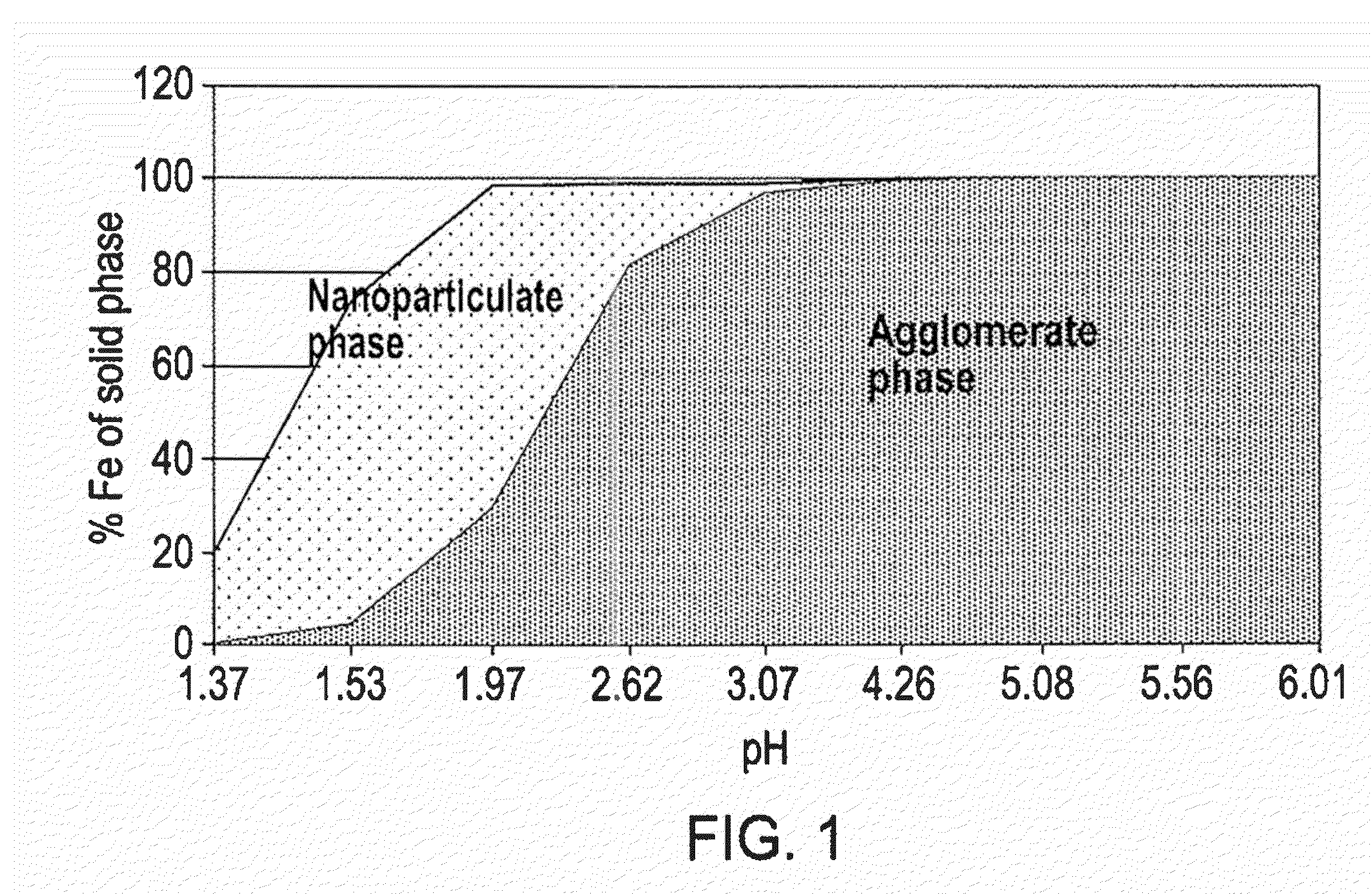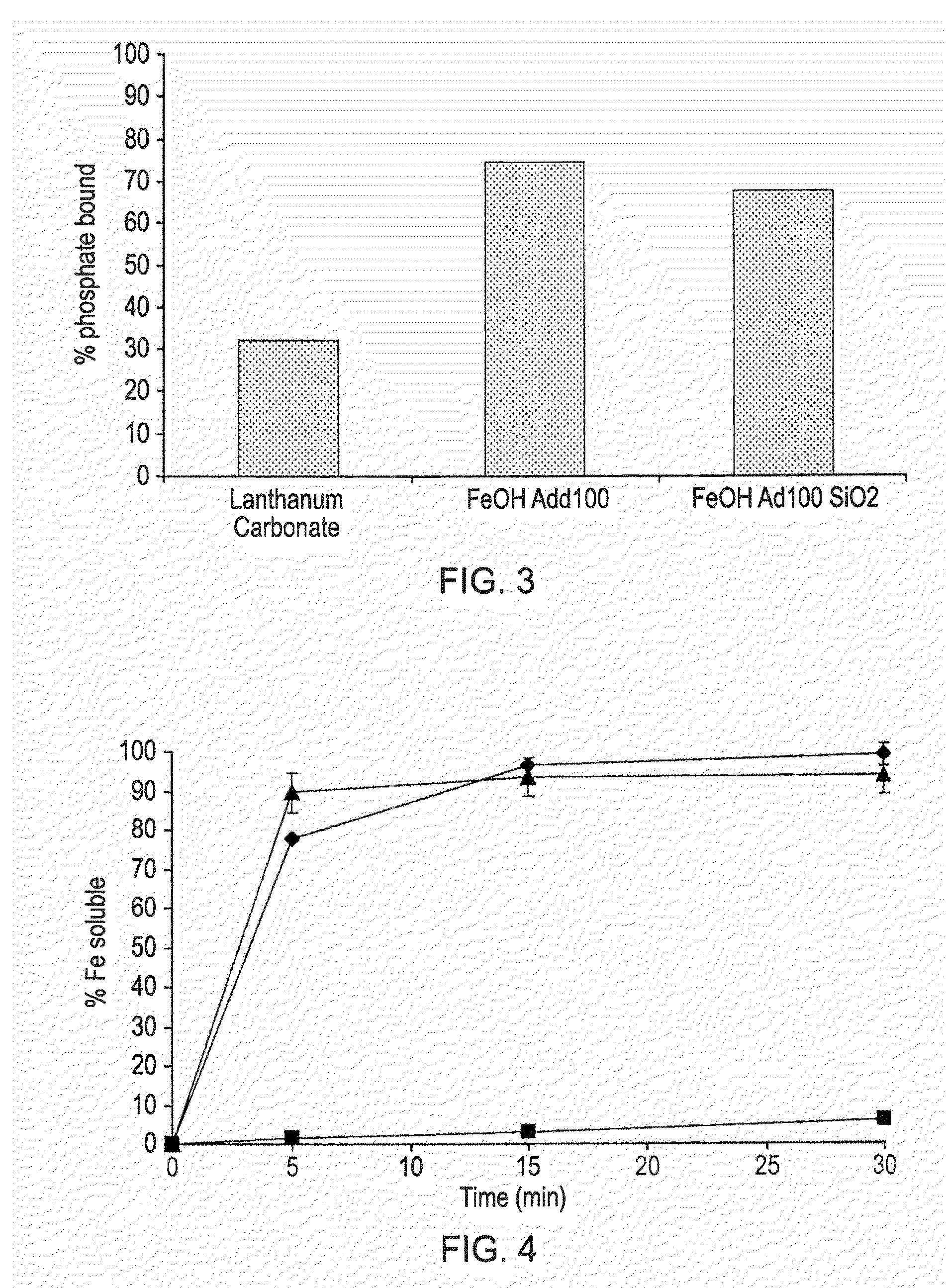Phosphate binding materials and their uses
a technology materials, applied in the field of phosphate binding materials, can solve the problems of secondary hyperthyroidism and soft tissue calcification, atherosclerosis of coronary arteries, and increase in serum phosphate concentrations, and achieve the effect of reducing complications
- Summary
- Abstract
- Description
- Claims
- Application Information
AI Technical Summary
Benefits of technology
Problems solved by technology
Method used
Image
Examples
Embodiment Construction
inary Phosphorus Excretion (mg in 8 hours) from 13 Volunteers Following a Meal plus FeOH Ad100 or placebo.
[0033]FIG. 12. In vitro phosphate binding of various ligand-modified ferric hydroxides. The solution was 10 mM phosphate and the amount of binder used was 214 mg in a total volume of 80 ml. The binder was first exposed to the lower pH for 60 minutes then the higher pH(s) for 60 minutes, all sequentially.
[0034]FIG. 13. In vitro phosphate binding of various ligand-modified ferric oxo-hydroxides. Different amounts of binder were added to a 10 mM phosphate solution to obtain 1:1, 1:3 and 1:10 phosphate-to-iron molar ratios. Phosphate binding occurred for 120 min at 37° C.
[0035]FIG. 14. In vitro phosphate binding of FeOH Ad100 recovered using different production methods. The solution was 10 mM phosphate and the amount of binder used was 214 mg in a total volume of 80 ml. The binder was first exposed to the lower pH for 60 minutes then the higher pH(s) for 60 minutes, all sequentiall...
PUM
| Property | Measurement | Unit |
|---|---|---|
| volume | aaaaa | aaaaa |
| temperature | aaaaa | aaaaa |
| pH | aaaaa | aaaaa |
Abstract
Description
Claims
Application Information
 Login to View More
Login to View More - R&D
- Intellectual Property
- Life Sciences
- Materials
- Tech Scout
- Unparalleled Data Quality
- Higher Quality Content
- 60% Fewer Hallucinations
Browse by: Latest US Patents, China's latest patents, Technical Efficacy Thesaurus, Application Domain, Technology Topic, Popular Technical Reports.
© 2025 PatSnap. All rights reserved.Legal|Privacy policy|Modern Slavery Act Transparency Statement|Sitemap|About US| Contact US: help@patsnap.com



